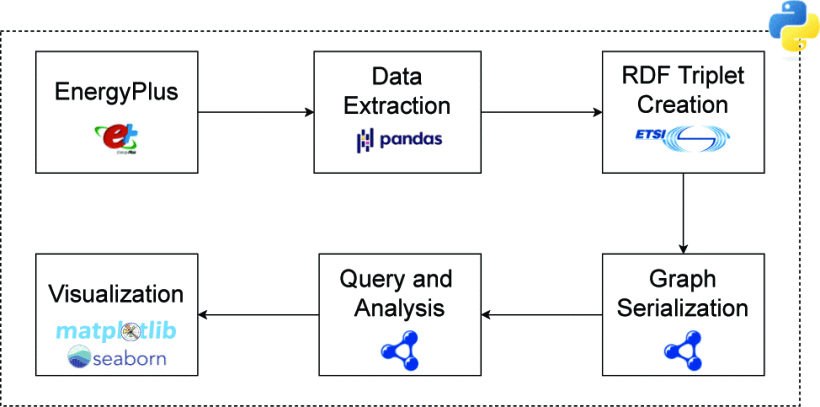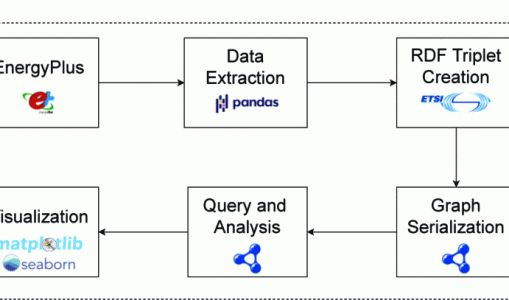Ontology-Driven Smart Building Semantics: An EnergyPlus-SAREF Approach
The growing complexity of smart buildings and IoT ecosystems demands standardized and interoperable frameworks that can seamlessly integrate diverse data sources. While building simulation tools like EnergyPlus generate detailed environmental data, their outputs often remain isolated from real-time IoT sensor streams, limiting their usefulness for adaptive control and energy optimization.

SAREF-based knowledge graph, illustrating the key steps from
raw data extraction to semantic querying.
This study introduces an ontology-driven integration framework that bridges EnergyPlus simulation data with IoT sensor data using the Smart Appliances Reference Ontology (SAREF). A dedicated data extraction pipeline converts EnergyPlus outputs into RDF triples, which are then structured into a SAREF-based knowledge graph. By semantically modeling parameters such as temperature, humidity, CO₂ levels, occupancy, and energy consumption, the system enables advanced querying, reasoning, and decision support.
Our contributions include:
-
Extending SAREF with a new ontology class for occupancy modeling (OccupancyCount), enhancing semantic representation of building usage.
-
Developing a semantic mapping pipeline that integrates simulation and IoT data, improving interoperability and enabling real-time monitoring.
-
Demonstrating a testbed scenario where correlations between occupancy, CO₂ levels, and HVAC energy use are extracted via SPARQL queries, supporting data-driven optimization strategies.
The results show that this ontology-driven approach not only improves interoperability and scalability, but also lays the groundwork for AI-driven control strategies, such as reinforcement learning for HVAC optimization and predictive energy management. By unifying simulation data with IoT sensor streams in a knowledge graph, the framework enhances energy efficiency, intelligent automation, and adaptive decision-making in modern smart buildings.
Future directions include real-world validation in operational buildings, integration of renewable energy sources into the ontology, and deployment of lightweight semantic reasoning at the edge to enable decentralized and real-time automation.

